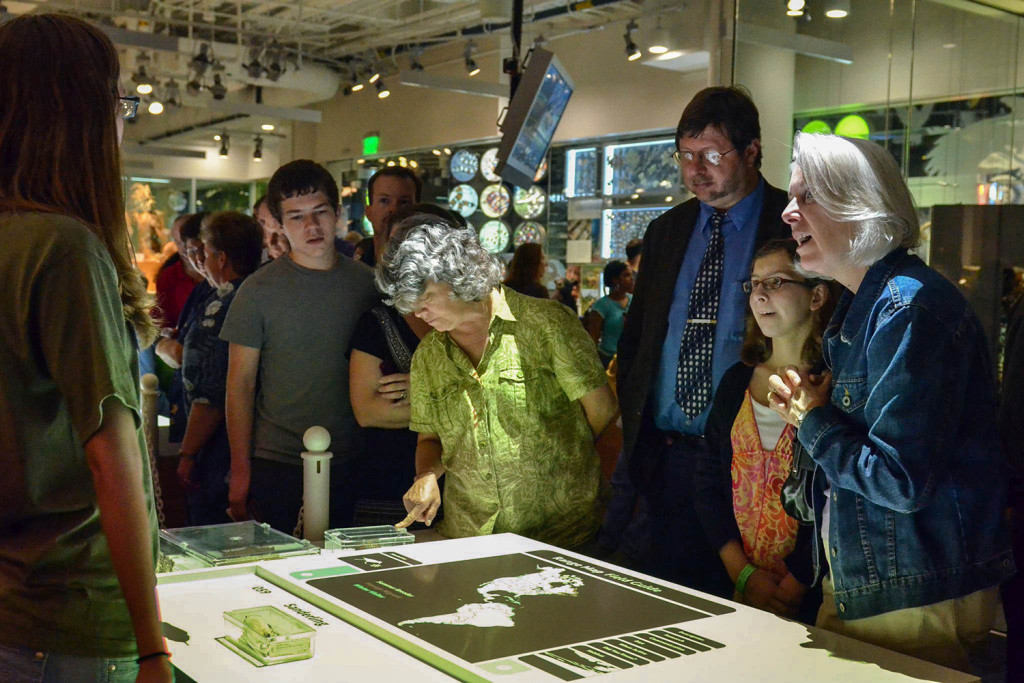Interpretive Planning for the 21st Century
Last week I had the distinct pleasure to visit with Seb Chan at the Cooper-Hewitt Smithsonian Design Museum and yes, I got to use the museum pen. In fact, I was the only person in the museum that day that got to use the pen since the system was down for routine maintenance. The pen is an interesting addition to the museum visit—I love that it vibrates when you touch it to an object label, giving you a tactile pay off for collecting the item. I characterize the pen as an interesting addition to the museum visit rather than an essential one because I would have enjoyed my visit to the Cooper-Hewitt without it, but according to the data collected by the Cooper-Hewitt so far, I am in a minority, and the pen and the beautifully designed touch tables add a vital component to the experience. (Although I will note that the galleries were full on a Thursday afternoon even though the pen was not available.) I wonder how much of the Cooper-Hewitt’s success comes from its use of innovative technology and how much from the general buzz of publicity surrounding its reopening—and its aggressive changing exhibition schedule, but it is probably too early to tell.
After touring the galleries with Seb we stopped for a coffee (allegedly the best coffee this side of Adelaide) and I picked Seb’s brain about other technologies that were on the horizon for museums such as augmented reality and the next iteration of Google glasses. Listening to Seb talk about a current exhibit at the Museum of the Moving Image (MOMI) featuring a virtual reality experience it struck me that we need a new model for interpretive planning or at the very least a better vocabulary, one that takes into account both 21st century learning environments as well as 21st century technologies. The shift in learning conditions has been chronicled by many, but I have found Anna Cutler’s 2010 article What Is To Be Done, Sandra? Learning in Cultural Institutions of the 21st Century reprinted in Reinventing the Museum (2012) Gail Anderson (ed.), to be one of the most succinct descriptions. Cutler identifies a number of shifts that have resulted in learning becoming:
• Participatory
• Personalized
• Co-produced and collaborative
• Focused on applying knowledge rather than acquiring it
• Aware of multiple perspectives
• Networked
In short, learning environments have become digital environments, driven by digital values as described by Koven Smith during our conversation on Museum Life.
Interpretive planning for exhibitions, on the other hand, remains primarily an analog process. It provides a systematic and goal-driven way to select and tell stories, placing potential visitors (museum users) at the center of a process that includes developing a clear, singular idea for the exhibition and making it relevant through use of various interpretive media. Articles and books that describe the interpretive planning process focus on methods for identifying the exhibition narrative, breaking the story into themes and messages that exhibit designers can use to stage how users encounter the story arc. Some interpretive planning books offer suggestions about the various skill sets necessary to develop the exhibit as well as how to build consensus among the members of the planning team. Other books focus on how to involve museum users in the planning process and how to test exhibit ideas. Almost every one that writes about interpretive planning agrees that there is no single way to approach the planning process and some even admit that adhering to a set of “best practices” can stifle creativity.
Yet for all of the good advice that I have read and come to learn from my own experiences, I cannot escape the nagging feeling that the process remains an analog process in a digital age. And, as my friend Nik Honeysett is fond of saying, “We can’t solve our digital problems with analog thinking.”
I do my best work when the exhibit goals are specific and well-articulated. Still I fear that our current planning processes tend to skew toward informational goals rather than experiential ones and that our choice of interpretive media is based on what can convey the information rather than what best supports a 21st century learning environment. So in the coming months I am going to be examining my practice, my process and vocabulary to see if I can infuse more digital thinking into the equation. I would love to hear how other interpretive planners are shifting their practice.

